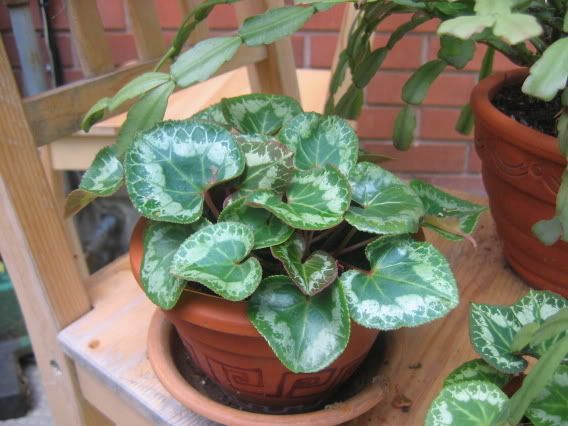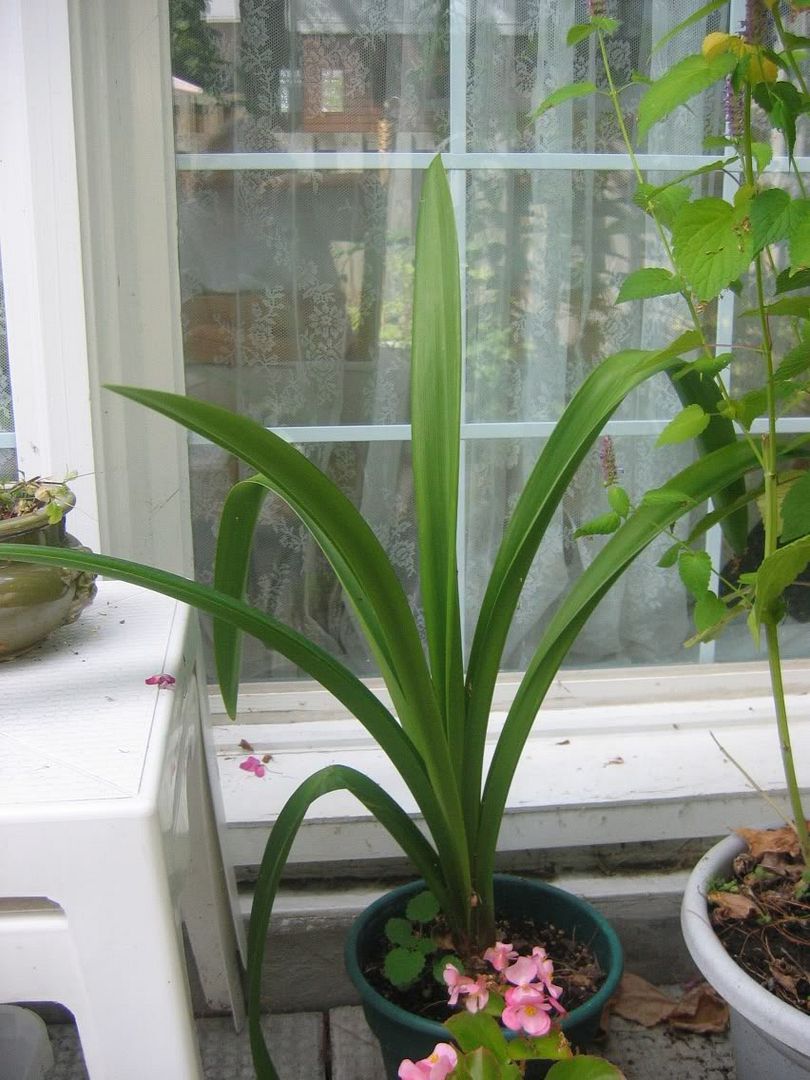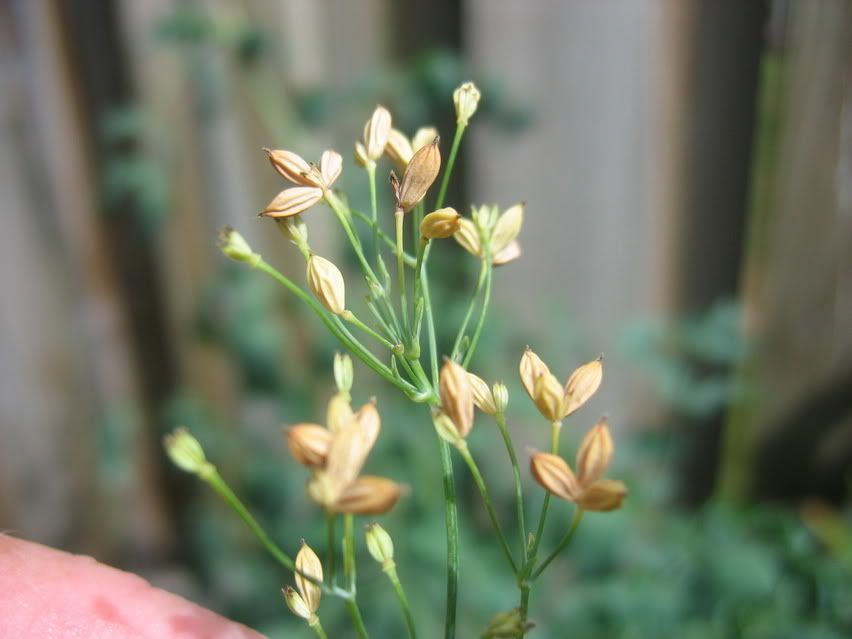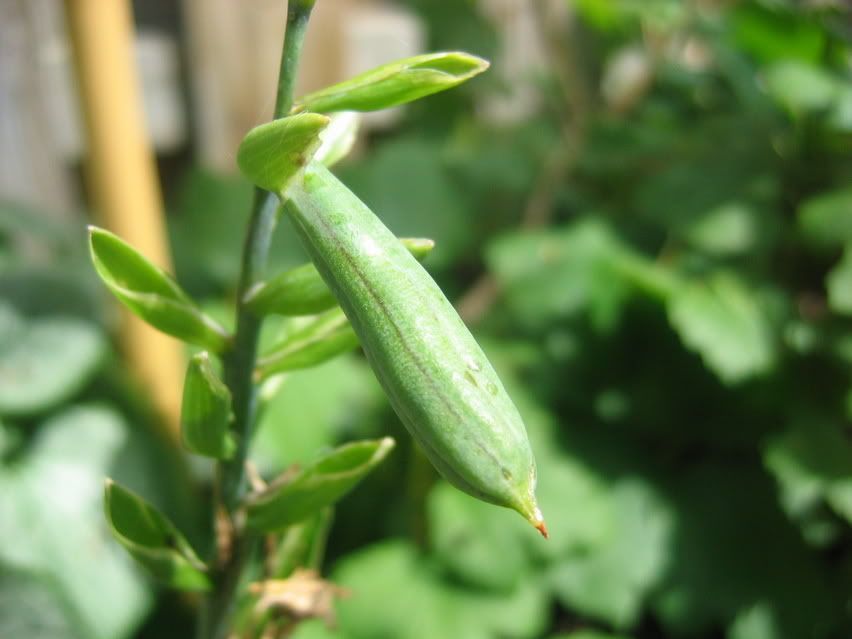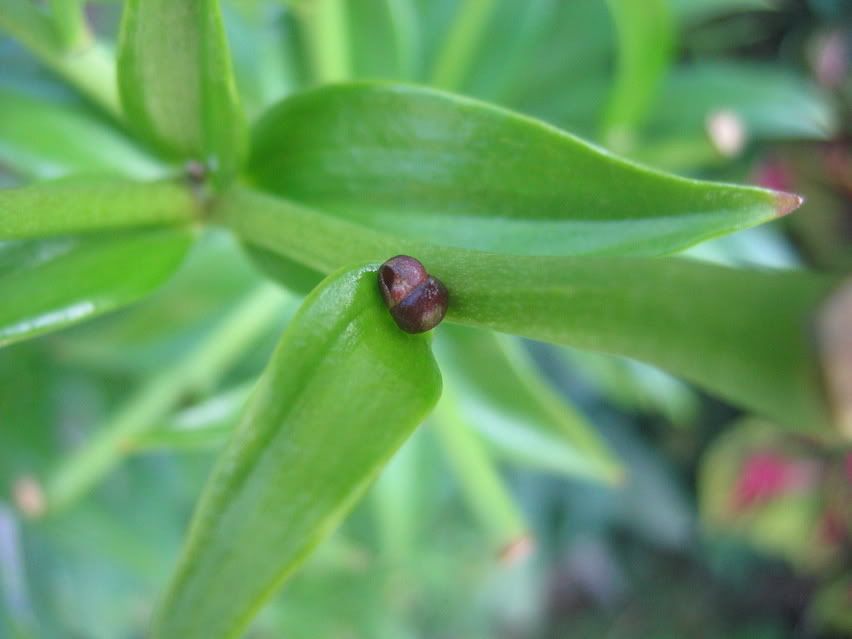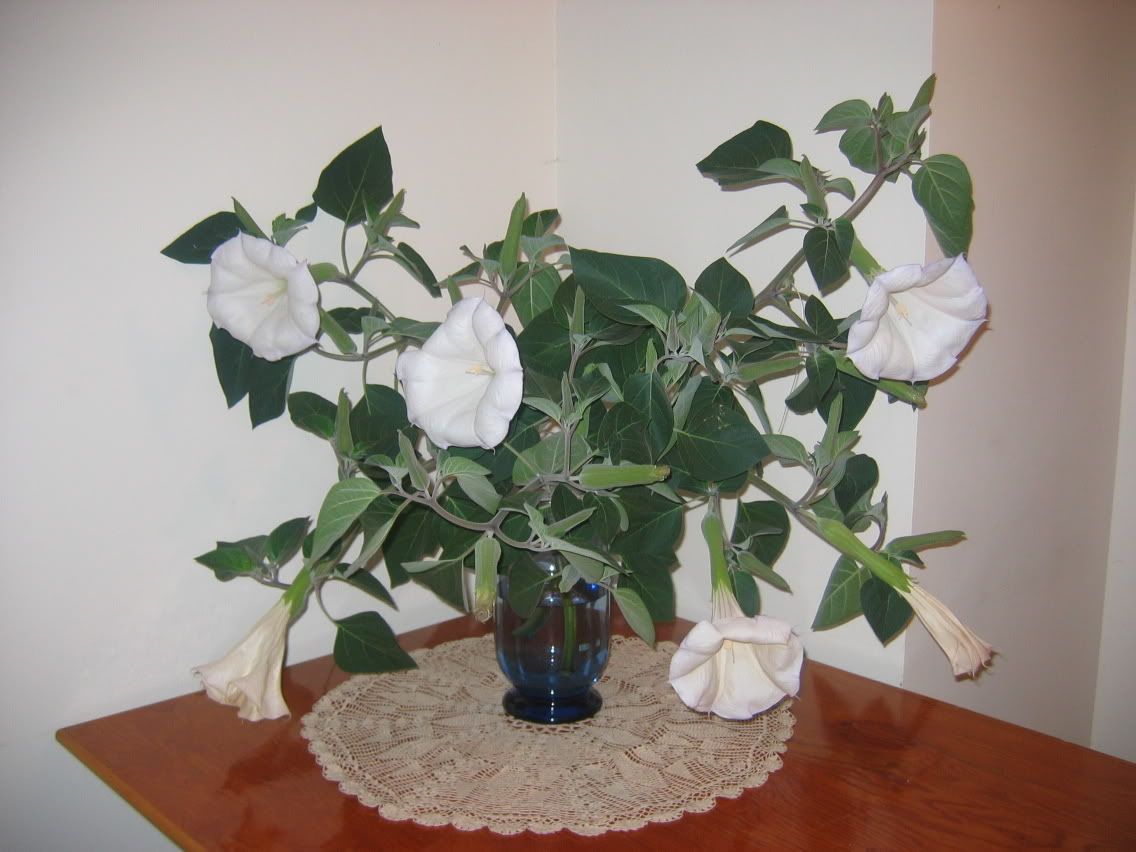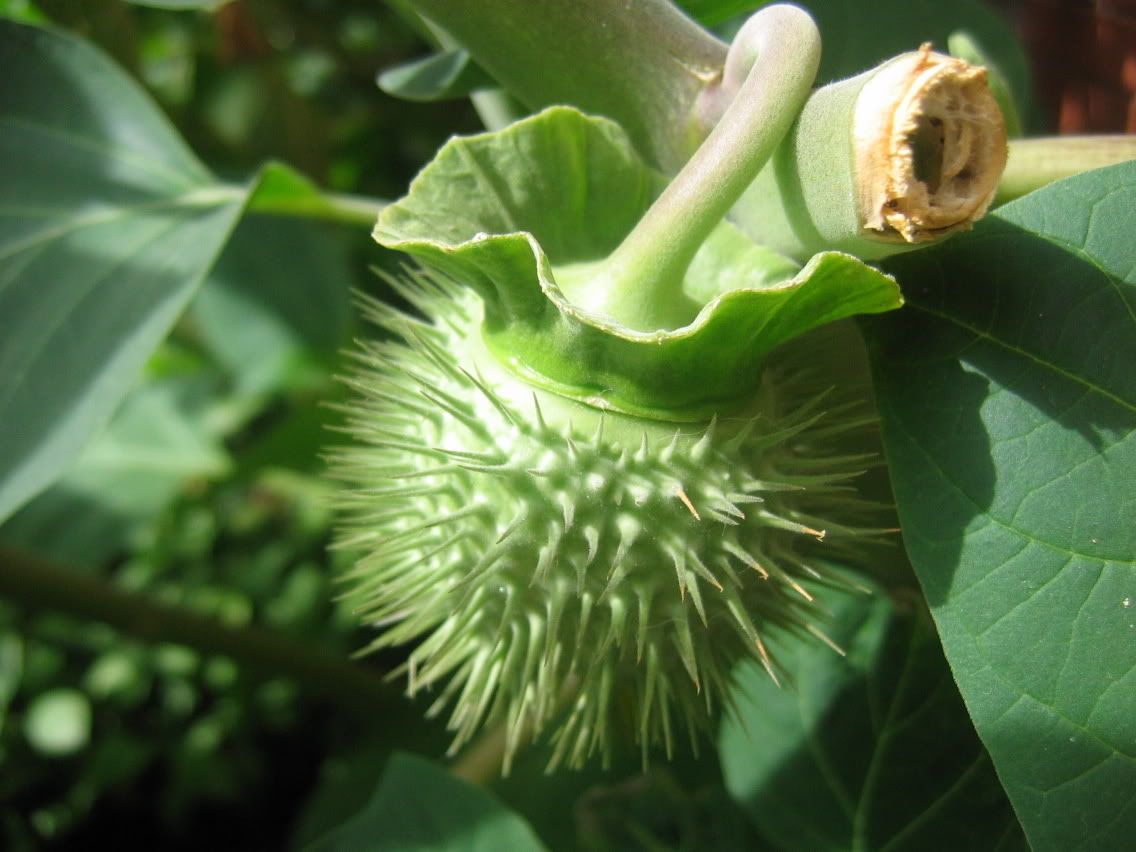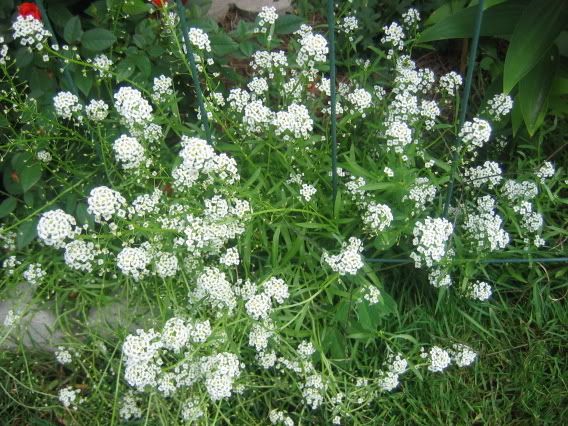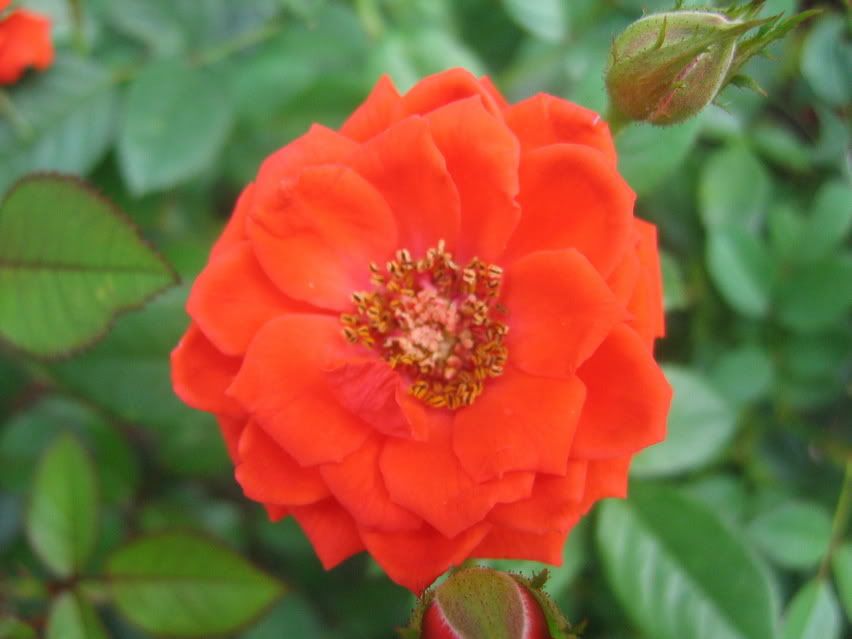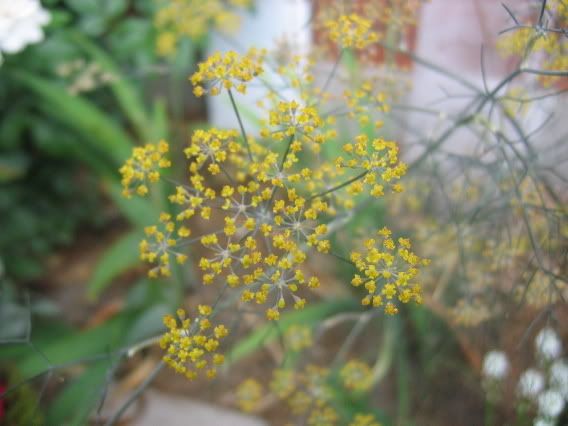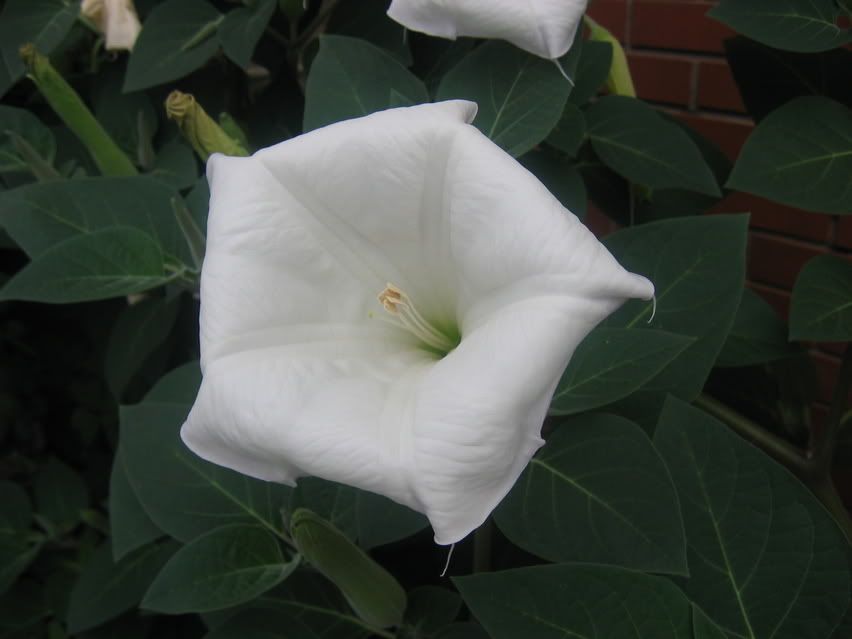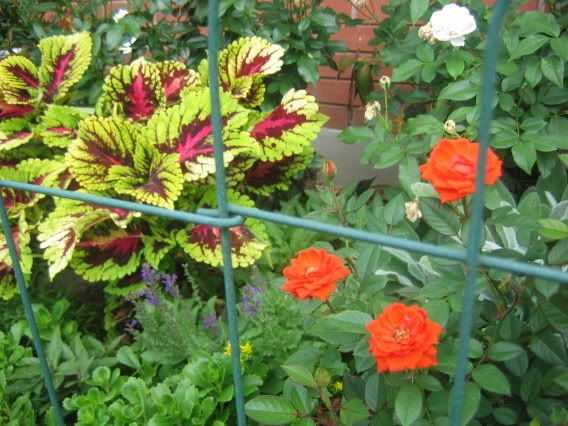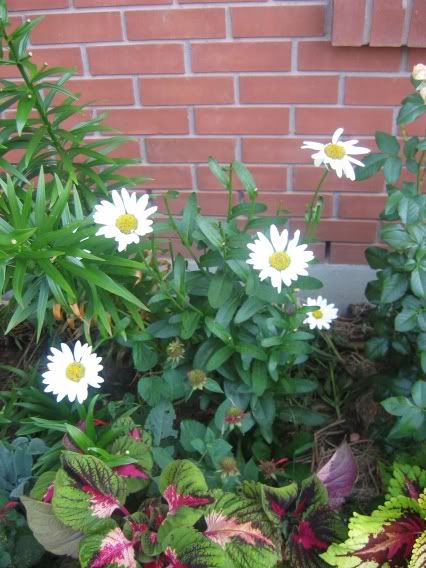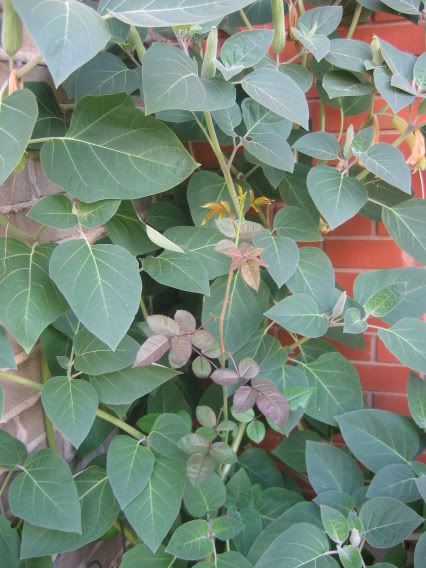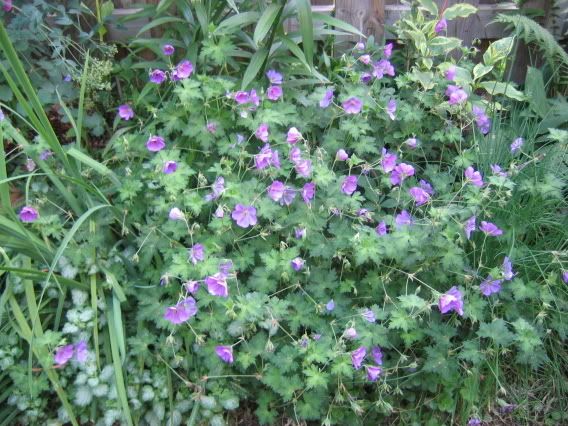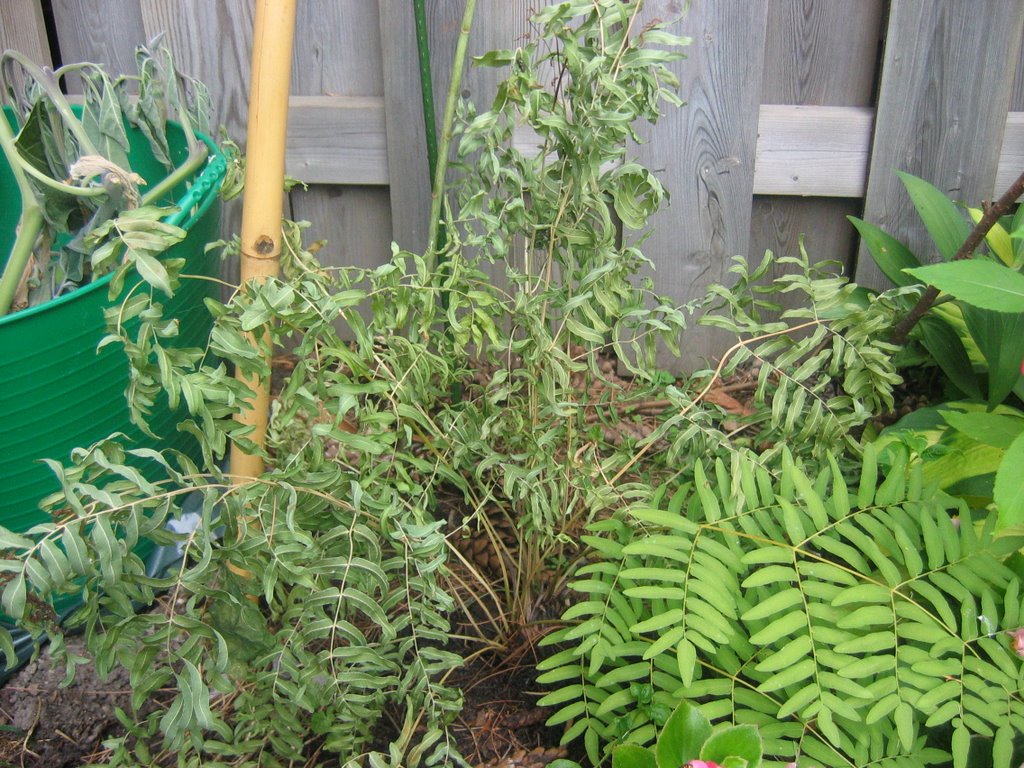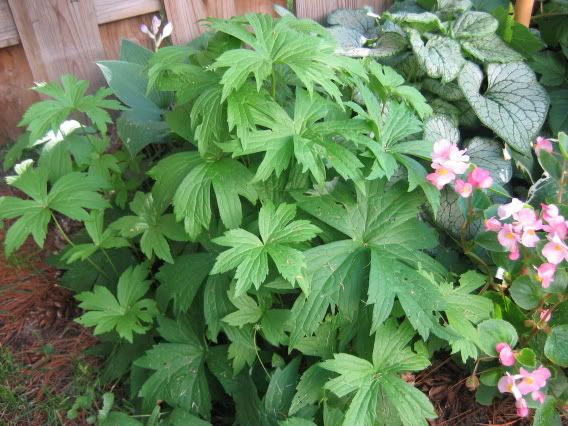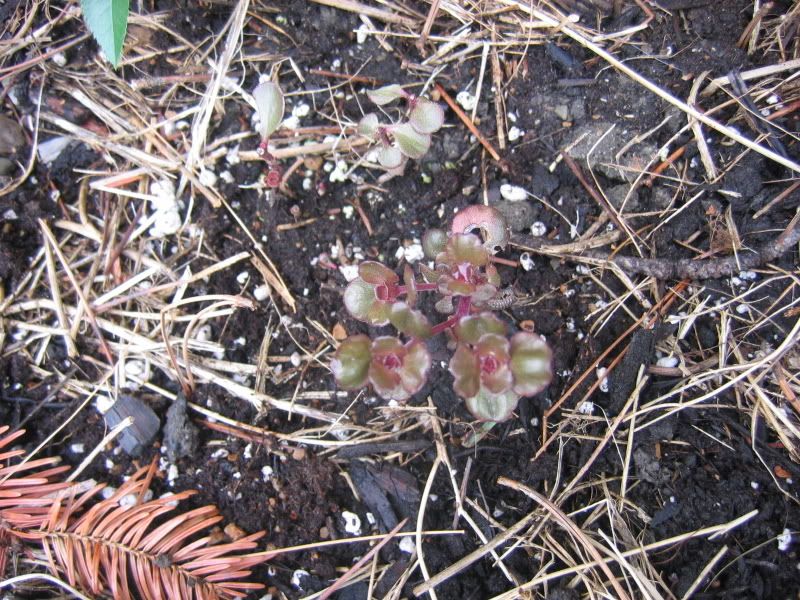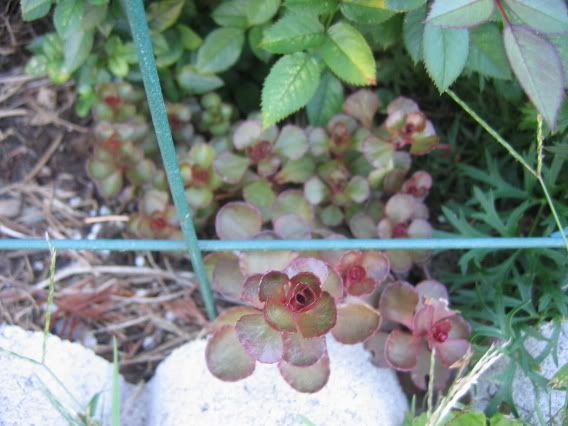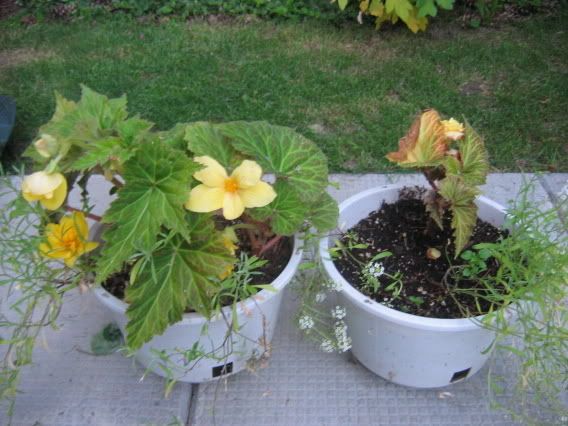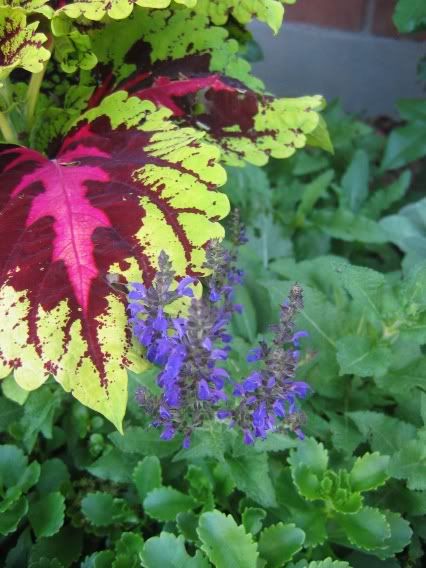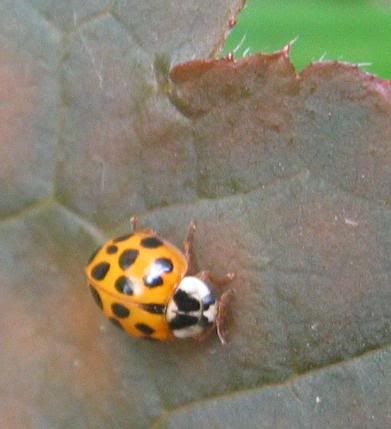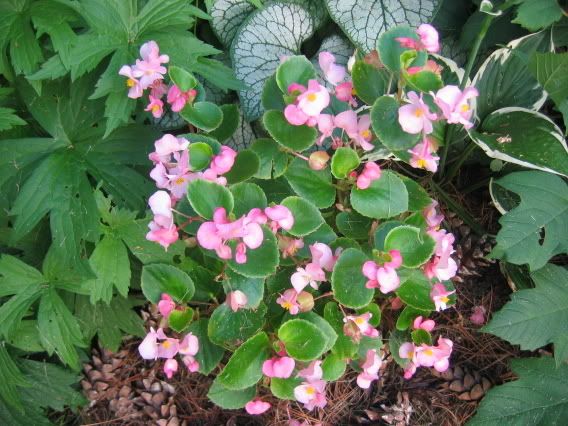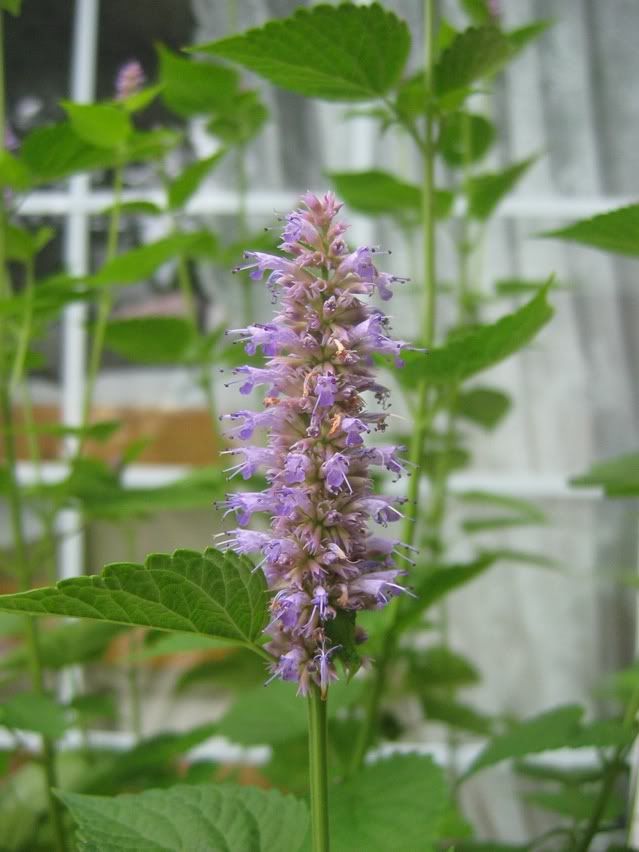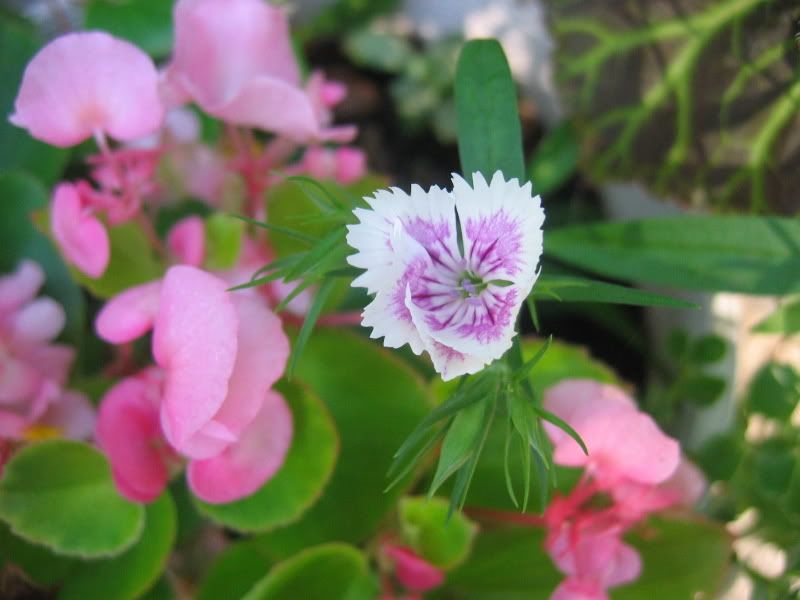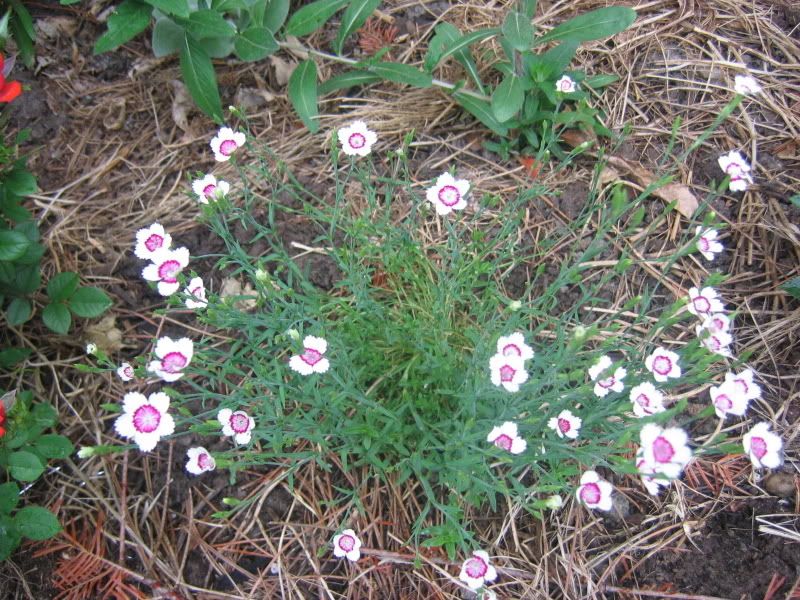Sedum creeps up on you
Or at least it crept up on me. My original clump was grown from a few branches I brought home from a walk along the bike path. Someone had obviously "donated" their clump to the city because it grew only in that one spot, and it isn't exactly a native plant. The little branches got shoved unceremoniously into the flower bed using the poke and plant method. Fingers being the original all-purpose garden tool. They prospered.
I've had stonecrop in my garden for a number of years now, constantly moved around, new patches being started from a handful of cuttings. It doesn't get much easier than that. I stuffed quite a few into pots this year because I was getting a little bit tired of spending money on yet more plants, and this made for free and easy trailers.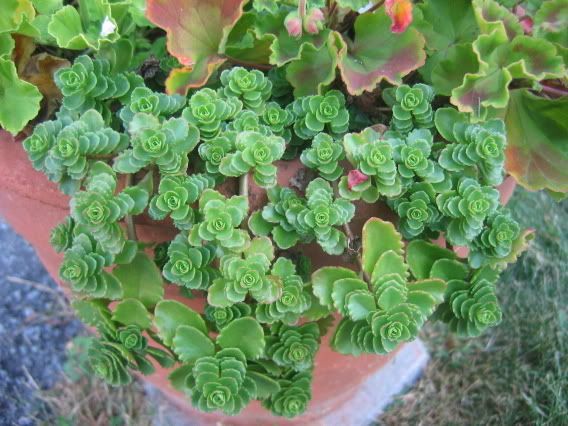 Some even got thrown in the pot with the cannas, although I had reservations. I think of stonecrops as nice, no-care, drought-resistant plants, and I was a little afraid they'd rot out with the constant watering regime that came with the cannas. But the price was right, and I had lots more where it came from.
Some even got thrown in the pot with the cannas, although I had reservations. I think of stonecrops as nice, no-care, drought-resistant plants, and I was a little afraid they'd rot out with the constant watering regime that came with the cannas. But the price was right, and I had lots more where it came from.
Now I ask you, does that look rotted out to you? No, me neither. Note to self: "drought-resistant" doesn't necessarily mean "prefers it dry". Sedum spurium is obviously delighted to take advantage of near-constant moisture, rich soil, and frequent fertilizing.
I'm hoping Pennisetum reacts the same way, because I'm thinking that next year I'd like to reuse these same sedums with fountain grass and coleus and a white geranium or two...
What would a gardener do without fantasies about next year?
Previous post on the topic of Stonecrop
Technorati tag: Stonecrop
